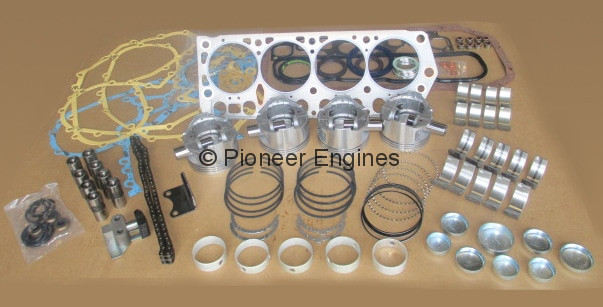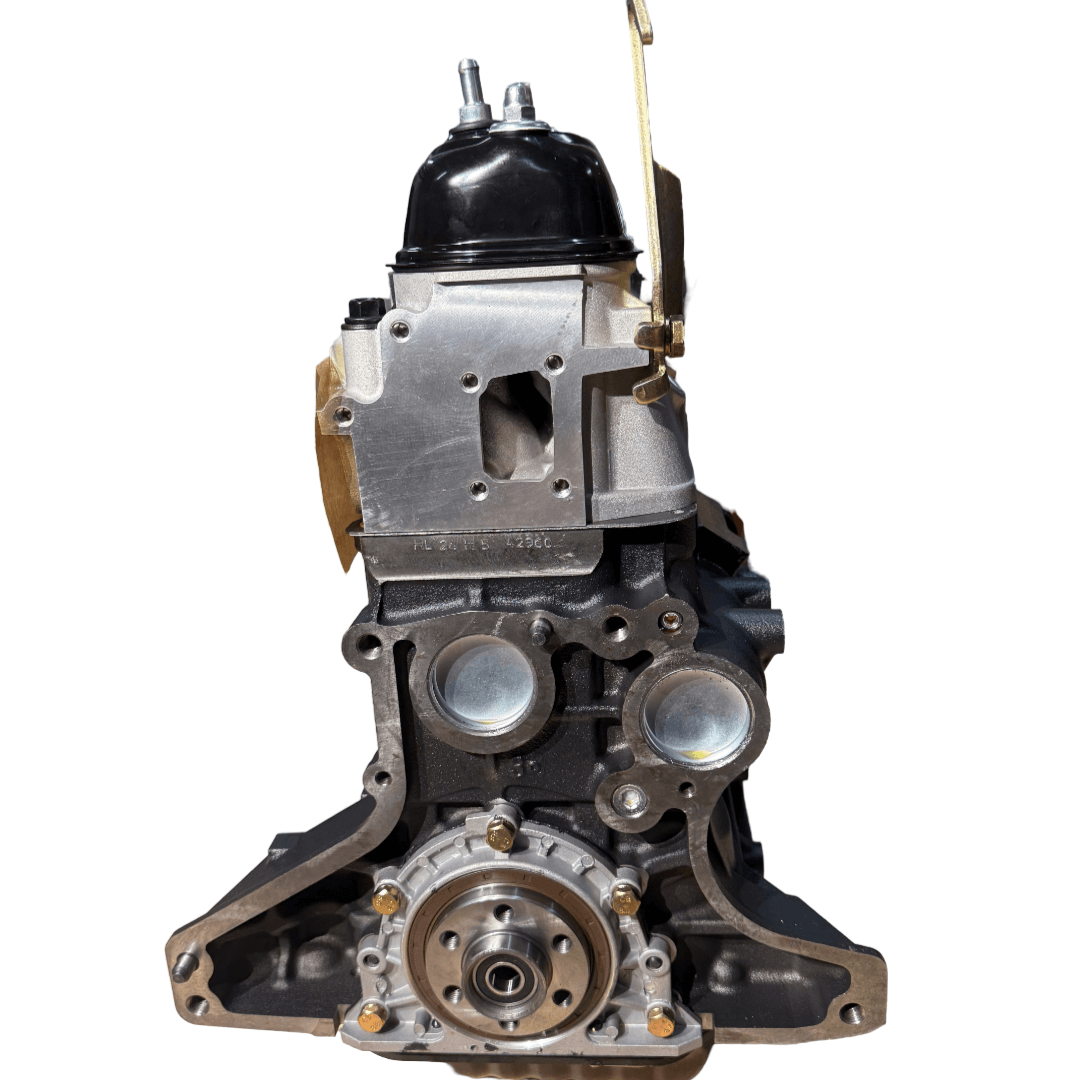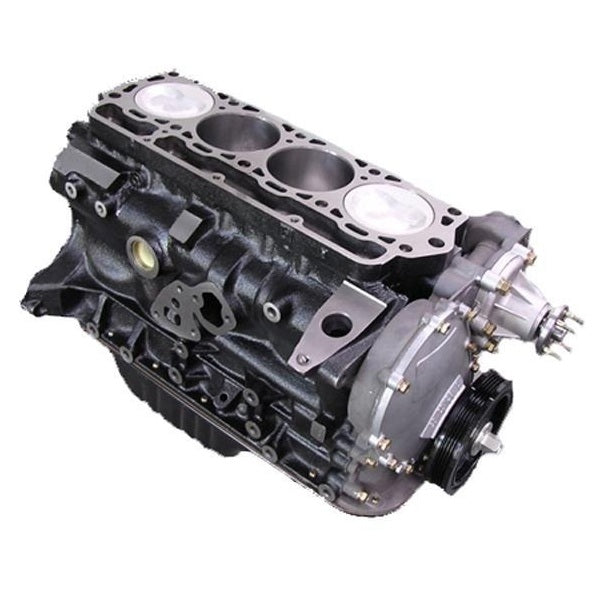Understanding the Mechanics Behind the 4Y Engine’s Power and Durability
The Ultimate Overview to the Engine: Trick Insights for every single Vehicle Lover
Comprehending the engine is essential for any type of automotive lover, as it offers as the heart of the vehicle and dictates its performance. This overview supplies a complete evaluation of engine makeup, kinds, and the technicians behind their operation, consisting of the innovative technologies that are improving the automobile landscape. It highlights the essential nature of maintenance practices that can dramatically affect an engine's life-span. However, the intricacies of engine characteristics and the current improvements in modern technology present questions that merit additional expedition. What might these insights reveal concerning the future of automobile design?
Makeup of an Engine
Recognizing the anatomy of an engine is vital for any kind of car enthusiast aiming to dive much deeper right into automobile technicians. An internal combustion engine mainly contains a number of essential components that operate in unison to convert fuel into mechanical energy.
At the heart of this system exists the cylinder block, which houses the cylinders where burning takes place. Piston motion within these cyndrical tubes is promoted by the crankshaft, which equates linear motion into rotational power. Furthermore, the camshaft plays an essential role in controlling the opening and closing of the engine's valves, ensuring appropriate air-fuel mix intake and exhaust gas expulsion.
Various other vital elements consist of the gas system, which supplies the engine with the required gas, and the ignition system, liable for launching combustion - 4y engine. The cooling and lubrication systems are also integral, preserving optimal operating temperature levels and minimizing friction, specifically
Engine Types and Configurations
A diverse range of engine kinds and configurations exists, each offering unique advantages and negative aspects tailored to various driving demands and choices. The most typical engine kinds consist of inline, V, level, and rotary setups.
Inline engines, including cyndrical tubes organized in a solitary line, are known for their simpleness and efficiency. They are often discovered in portable cars, offering an equilibrium of power and economy. V engines, defined by their 2 banks of cyndrical tubes arranged in a V form, offer greater performance and smoother procedure, making them prominent in sporting activities and luxury cars and trucks.
Level engines, or boxer engines, have flat opposed cylinders, which add to a lower center of gravity, improving automobile security. These are typically seen in brand names like Subaru and Porsche.
Rotating engines, although much less common, use an unique design with a triangular rotor and offer high power-to-weight ratios. They master light-weight and portable applications, mainly seen in Mazda vehicles.
Each engine type serves particular efficiency qualities, weight distributions, and fuel performances, guaranteeing that auto enthusiasts can choose the ideal engine configuration to match their driving design and vehicle needs.

How Engines Work
Engines, despite their kind or arrangement, operate on fundamental principles that control their performance and effectiveness. At their core, engines convert fuel right into mechanical energy through a series of regulated surges or compressions. This procedure generally involves four major strokes: intake, compression, exhaust, and power.
During the intake stroke, the engine pulls in a blend of air and gas. The compression stroke complies with, where the mix is pressed in the cyndrical tube, boosting its temperature and pressure. In the power stroke, a spark ignites the compressed mixture (in fuel engines) or the blend stirs up spontaneously (in diesel motor), leading to a fast development of internet gases that pushes the piston down. The exhaust stroke eliminates the invested gases from the cyndrical tube. 4y engine.
The efficiency of an engine is affected by different variables, including the style of the combustion chamber, the kind of fuel utilized, and the accuracy of the engine's elements. Recognizing these essential principles is crucial for car enthusiasts that look for to appreciate the intricate auto mechanics he has a good point behind their vehicles, as well as for those intending to boost efficiency via alterations and adjusting.
Technologies in Engine Innovation
In recent times, advancements in engine modern technology have substantially changed the vehicle landscape, improving both efficiency and ecological sustainability. Among one of the most remarkable innovations is the advancement of turbocharging and supercharging, which enables smaller engines to create better power outputs without sacrificing fuel efficiency. This has caused a surge in the appeal of downsized engines, giving manufacturers with the ability to meet strict exhausts regulations while maintaining efficiency standards.
Furthermore, hybrid and electric powertrains are reshaping the engine standard. Crossbreed systems incorporate inner burning engines with electric motors, enhancing fuel intake and minimizing emissions. Fully electrical cars (EVs) eliminate the combustion engine entirely, relying upon sophisticated battery innovation to supply instant torque and outstanding acceleration.
In addition, the assimilation of expert system and equipment learning in engine monitoring systems permits real-time optimization of performance criteria, enhancing performance and responsiveness. Innovations such as variable shutoff timing and straight gas shot even more refine combustion processes, optimizing power outcome while minimizing waste.
As the automobile market remains to develop, these technologies in engine technology will play a crucial duty in shaping the future of wheelchair, focusing on both performance and sustainability.
Maintenance Tips for Fanatics
Keeping an engine is as crucial as the developments that boost its performance. Normal upkeep not only lengthens the life of your engine however additionally ensures optimal efficiency. Start with routine oil changes, complying with the supplier's referrals for oil kind and adjustment intervals. Tidy oil lubricates top article engine parts properly, protecting against deterioration.
Check and change air filters periodically to guarantee appropriate air flow, which is crucial for combustion efficiency. A blocked air filter can bring about reduced performance and enhanced fuel intake. Keep an eye on the coolant levels to stop getting too hot, and change coolant according to the solution routine. 4y engine.

Verdict
In final thought, a complete understanding of engine makeup, types, and auto mechanics is crucial for automobile fanatics. Routine upkeep practices, including oil modifications and air filter checks, are crucial for making certain ideal engine functionality and long life.

Engines, regardless of their kind or configuration, operate on fundamental principles that govern their efficiency and performance. In the power stroke, a trigger stirs up the pressed combination (in gas engines) or the mix stirs up automatically (in diesel engines), resulting in a quick growth of gases that pushes the piston down.In recent years, developments in engine innovation have substantially transformed the automotive landscape, enhancing both efficiency and environmental sustainability.